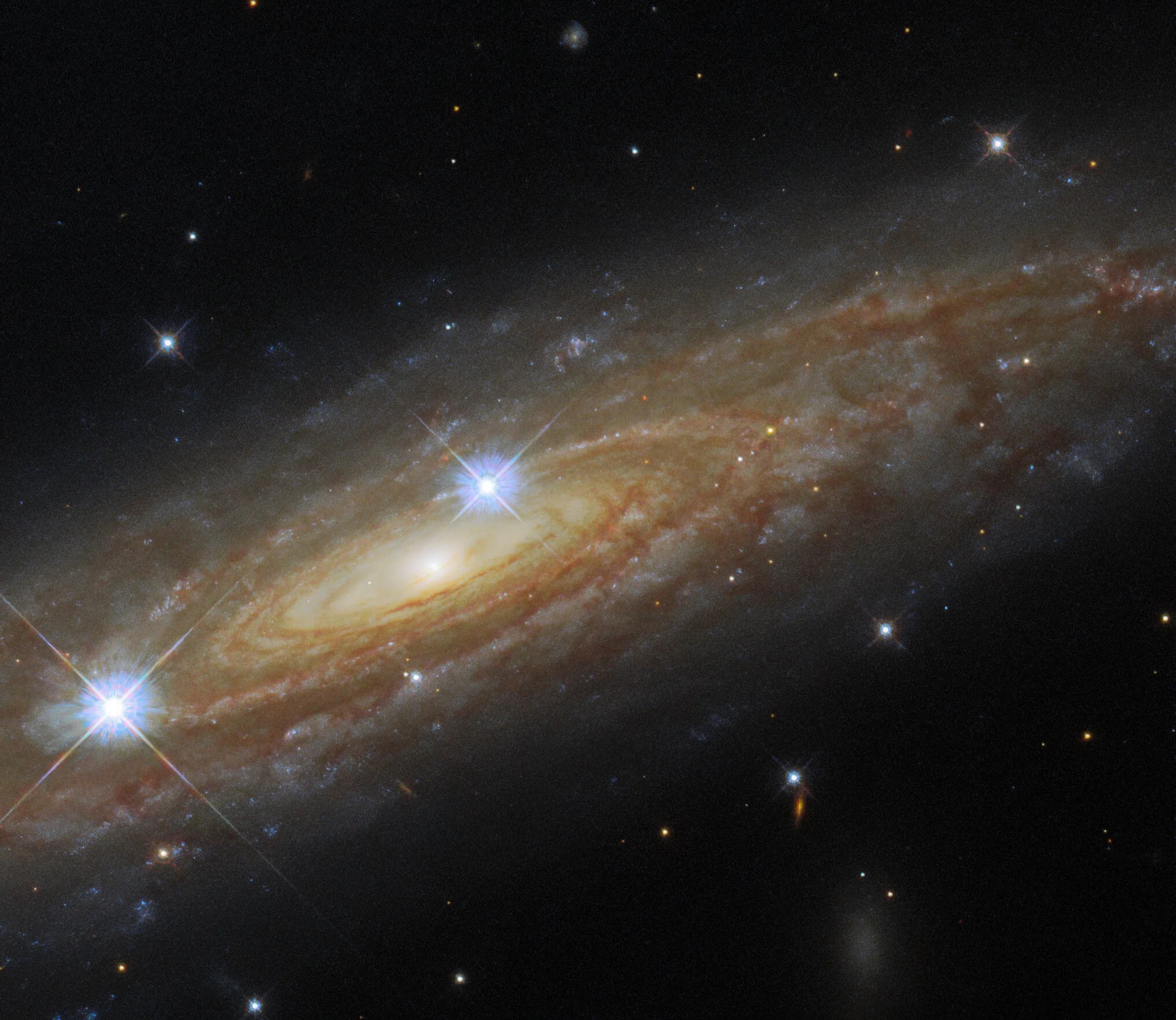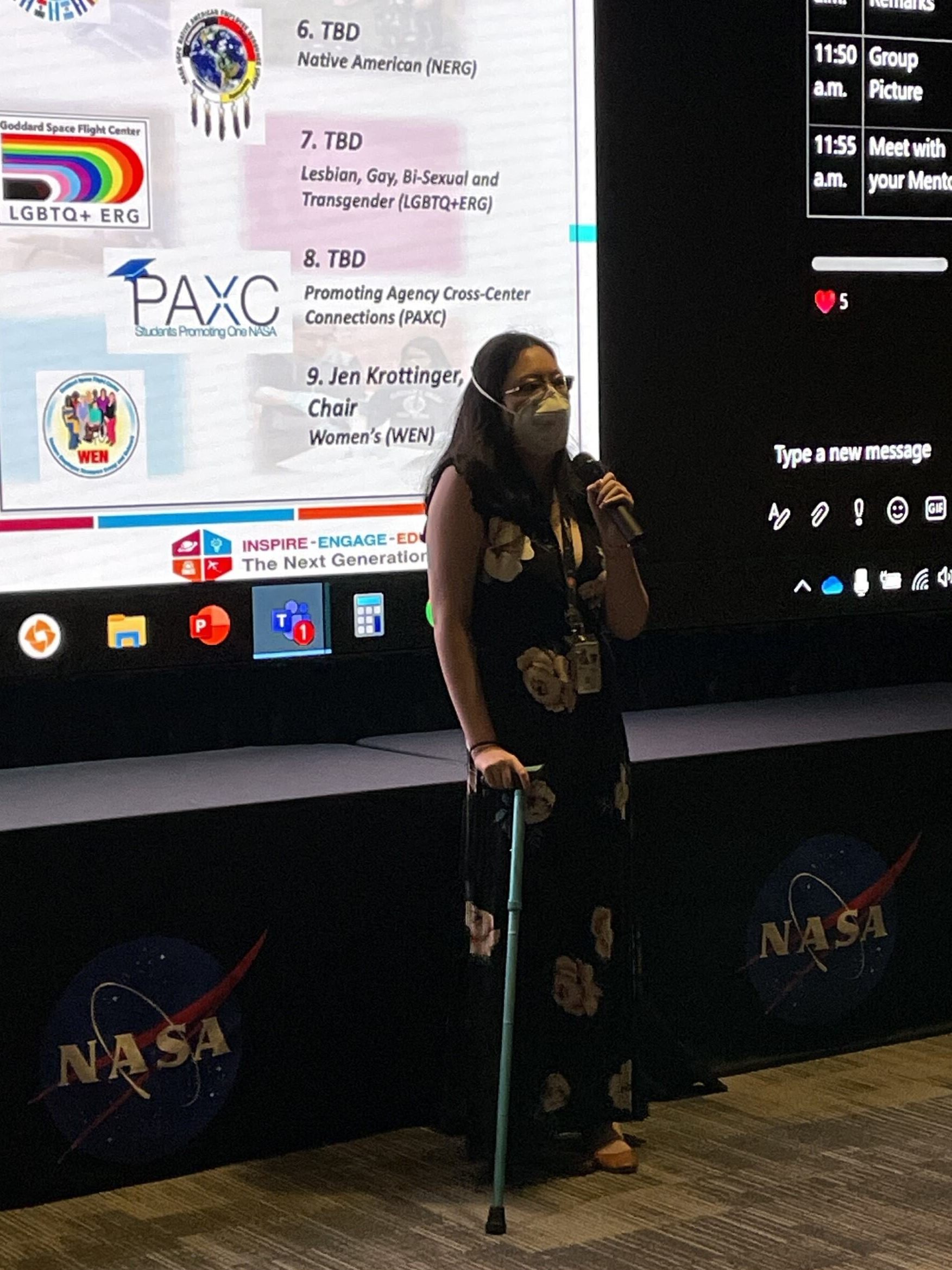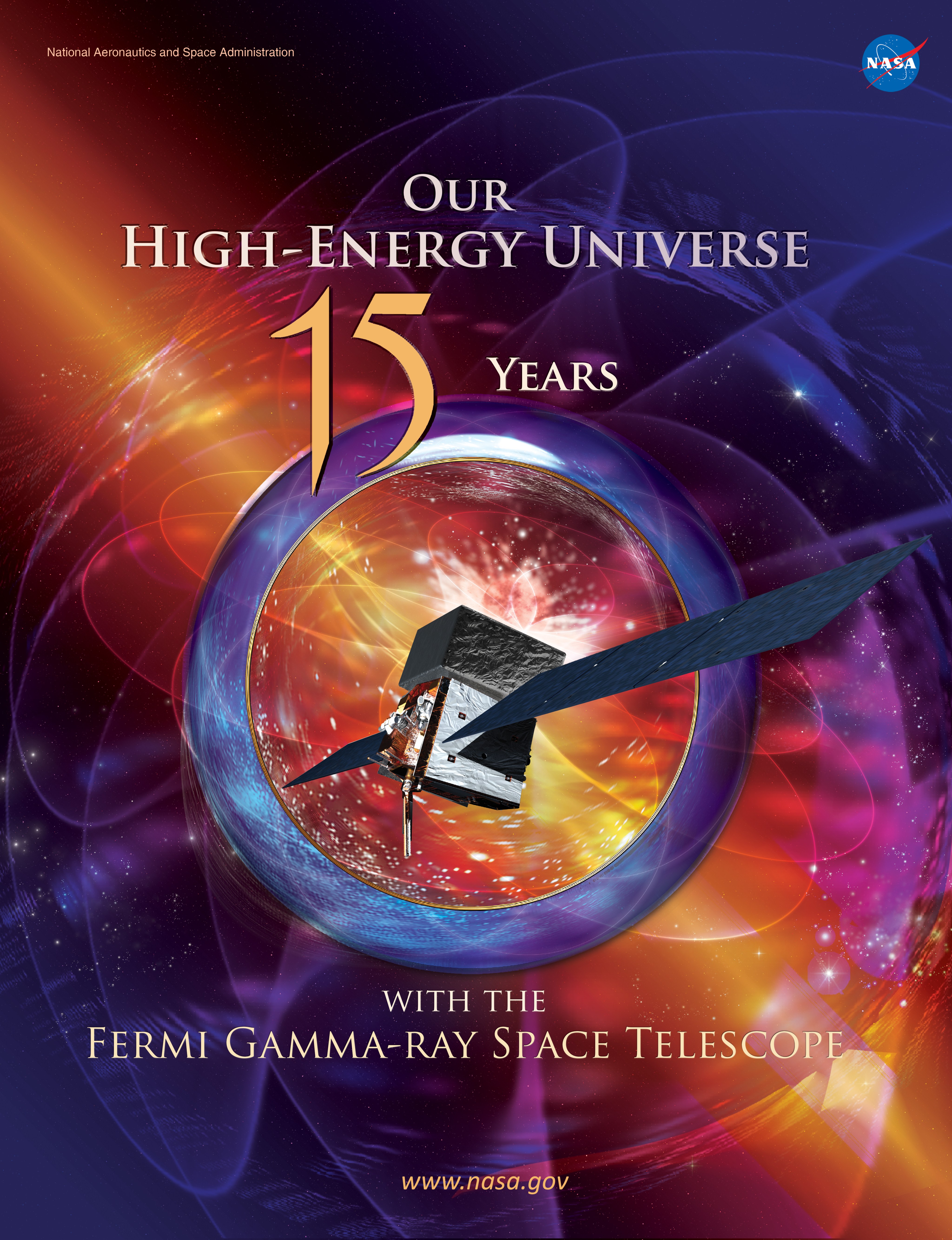2 min read

This astronomical portrait from the NASA/ESA Hubble Space Telescope showcases an edge-on view of the majestic spiral galaxy UGC 11537. The infrared and visible light capabilities of Hubble’s Wide Field Camera 3 have captured the galaxy’s tightly wound spiral arms swirling around its heart. The image reveals the bright bands of stars and the dark clouds of dust threading throughout the galaxy.
UGC 11537 is 230 million light-years away in the constellation Aquila and lies close to the plane of the Milky Way. So close that foreground stars from our own galaxy have crept into the image – the two prominent stars in front of UGC 11537 are interlopers from within the Milky Way. The spikes surrounding these stars are imaging artifacts, called diffraction spikes. They are the result of starlight interacting with the structure that supports Hubble’s secondary mirror.
This image came from a set of observations designed to help astronomers weigh supermassive black holes in the centers of distant galaxies. Hubble’s sharp-eyed observations along with data from ground-based telescopes allowed astronomers to make detailed models of the mass and motions of stars in these galaxies, which in turn helps constrain the mass of supermassive black holes.
Text credit: European Space Agency (ESA)
Media Contact:
Claire Andreoli
NASA's Goddard Space Flight Center
301-286-1940







